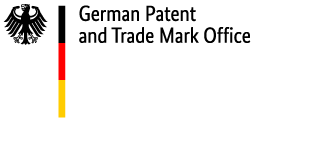Content
Enforcing design rights
Please note that the German Patent and Trade Mark Office is not allowed to provide legal advice. The information below is therefore not intended to replace legal advice by a lawyer, but to provide you with a rough and non-exhaustive overview of the options available to you.
The registered design as an exclusive right
The registered design is what is known as an “exclusive right”. That is, others are prohibited from using your design without your consent. This includes, among other things, the manufacturing or offering of a product (Sec. 38 Design Act [Designgesetz]). You as the design proprietor are responsible for defending your design against people who copy it.
Registered designs may be transferred by the right holder to others at any time. In addition, the proprietor of a registered design can grant others a right of use for his design, this is referred to as a licence within the meaning of Section 31 of the Design Act.
How to detect design infringement
Once your design has been registered, you can regularly conduct a search (have a search conducted for you) in the Design Register for similar or identical designs. This way you are informed about new design registrations and can act in time. Watch the market and the competitors to detect design infringements. Professional providers of search services, such as the patent information centres, offer assistance.
The enforcement of industrial property rights requires extensive legal knowledge. Therefore, in most cases, it is advisable to seek legal assistance from a lawyer.
- Lawyers with special knowledge in the field of IP protection (specialist lawyers for IP protection) in your region can be found via the chambers of lawyers.
- Patent attorneys can be found via a nationwide patent attorney search, a service of the Chamber of Patent Attorneys.
How to enforce your design rights
If you as the design proprietor notice that third parties are infringing your designs, you can take action against the infringer both out of court and in court. You have the following options among others:
- Conduct before a lawsuit
As holder of the right, you can first try to solve the problem in an amicable way by contacting the infringer directly by sending him, for example, a query concerning entitlement or a cease-and-desist letter.
Important: If a cease-and-desist letter is unjustified, the recipient of the cease-and-desist letter may, under certain circumstances, be entitled to claim compensation from the person issuing the cease-and-desist letter.
- Design infringement action
The regional courts have jurisdiction for the enforcement of your rights in the case of design infringement (![]() Sec. 52(1) Design Act). Please note that you must appoint a lawyer to represent you before the regional courts. That means that you must have a lawyer to enforce your claims in court.
Sec. 52(1) Design Act). Please note that you must appoint a lawyer to represent you before the regional courts. That means that you must have a lawyer to enforce your claims in court.
If you wish to take action against a registered design, you can file an application with the German Patent and Trade Mark Office for the determination or declaration of invalidity of a registered design pursuant to ![]() Section 33 of the Design Act or file a counterclaim for the determination or declaration of invalidity in infringement proceedings.
Section 33 of the Design Act or file a counterclaim for the determination or declaration of invalidity in infringement proceedings.
In infringement proceedings, you as IP right holder can assert the following claims, for example:
- claim for removal (
 Sec. 42(1), first sentence, Design Act)
Sec. 42(1), first sentence, Design Act) - claim for cessation and desistance (
 Sec. 42(1) Design Act)
Sec. 42(1) Design Act) - claim for information (
 Sec. 46 Design Act)
Sec. 46 Design Act) - claim for destruction (
 Sec. 43(1) Design Act)
Sec. 43(1) Design Act) - claim for release (
 Sec. 43(3) Design Act)
Sec. 43(3) Design Act)
- Injunction
Court proceedings may often be time-consuming. Where there is a need for urgency, an injunction may offer provisional legal protection.
Important: If an injunction proves to be unjustified from the outset, the opponent can claim compensation from the person filing the request for injunction.
- Application for border seizure
Customs authorities play an essential role in combating counterfeiting and piracy. In order to prevent goods infringing your design rights from entering the European market or being exported into third countries, you can submit an application for border seizure (![]() Sec. 55 Design Act) to the customs authorities.
Sec. 55 Design Act) to the customs authorities.
Important: If a seizure proves to be unjustified from the outset, you may have to compensate the damage caused by the unjustified seizure.
- Criminal proceedings
Deliberate IP infringement is in principle punishable by law, but as a rule is only prosecuted upon request (![]() Sec. 51 Design Act).
Sec. 51 Design Act).
Examples – what you can do if …
Using three cases as examples we will show you what you can do if problems arise through third parties:
- Case 1: If you notice that someone else has registered a design very much resembling your earlier registered design
- Case 2: If you notice find that someone else is using your design without your permission
- Case 3: If your design right is challenged by a third party
Further links
- Patent information centres
-
 Application procedure for border seizure
Application procedure for border seizure -
 Enforcement directive
Enforcement directive -
 German chamber of lawyers (in German)
German chamber of lawyers (in German) -
 Chamber of Patent Attorneys
Chamber of Patent Attorneys
Picture: iStock.com/seventyfour
Last updated: 7 January 2025

Social Media